SwiftKYC
Conversational AI for Seamless Savings Account Onboarding
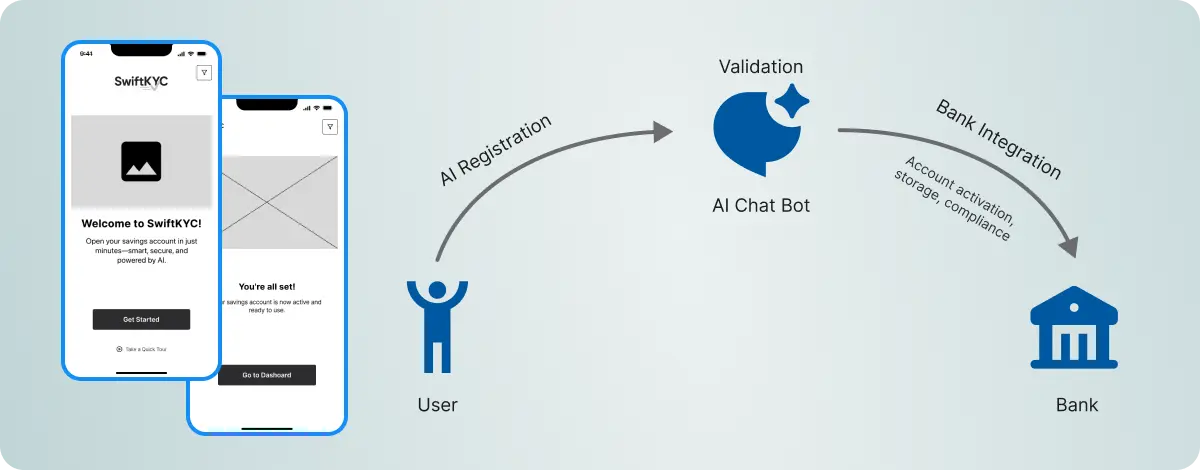
Overview
SwiftKYC is a secure, AI-powered onboarding system designed to simplify how users open savings accounts—removing friction, improving clarity, and increasing trust. Designed for both digital-first and accessibility-dependent users, it leverages real-time conversational flows and document-free Aadhaar verification to streamline the process.
The Problem
Onboarding through traditional banking apps is often:
- Time-consuming and document-heavy
- Lacking accessibility support for older or differently-abled users
- Opaque in terms of real-time progress or errors
Research
Quantitative Research & Business Impact
To validate the business need for SwiftKYC, I explored current trends in digital banking and their implications for both user adoption and operational efficiency.
- Digital Adoption in India
- Over 751 million internet users in India (52.4% penetration, 2024).
- Among 18–24-year-olds, 42% prefer digital-only banks.
- Mobile banking market projected to grow 5× by 2032 (CAGR 20.4%).
- Expected Business Outcomes
- 20% boost in new customer acquisition when onboarding is fully digital.
- 15% cost reduction in KYC processing through automation and retry flows.
- Higher retention rates when AI onboarding builds early trust and removes document fatigue.
Qualitative Insights
To ensure a user-first solution, we started with foundational research:
- SWOT & Competitor Analysis:
Benchmarked leading Indian banks (ICICI, SBI, HDFC, Axis, etc.) to identify gaps in AI onboarding and accessibility readiness.
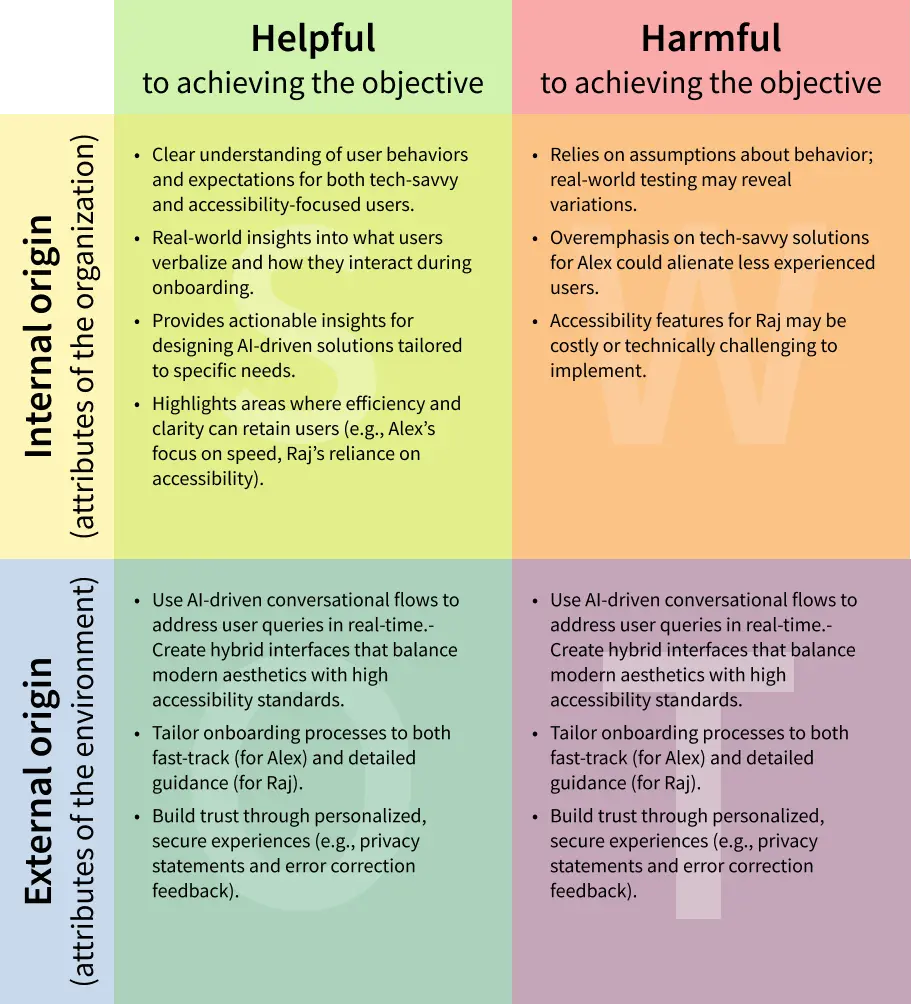
- Empathy Mapping for two key personas:
- Alex – A digital-native expecting speed, responsiveness, and simplicity.
- Raj – Accessibility-focused, relying on screen readers, larger fonts, and guided navigation.
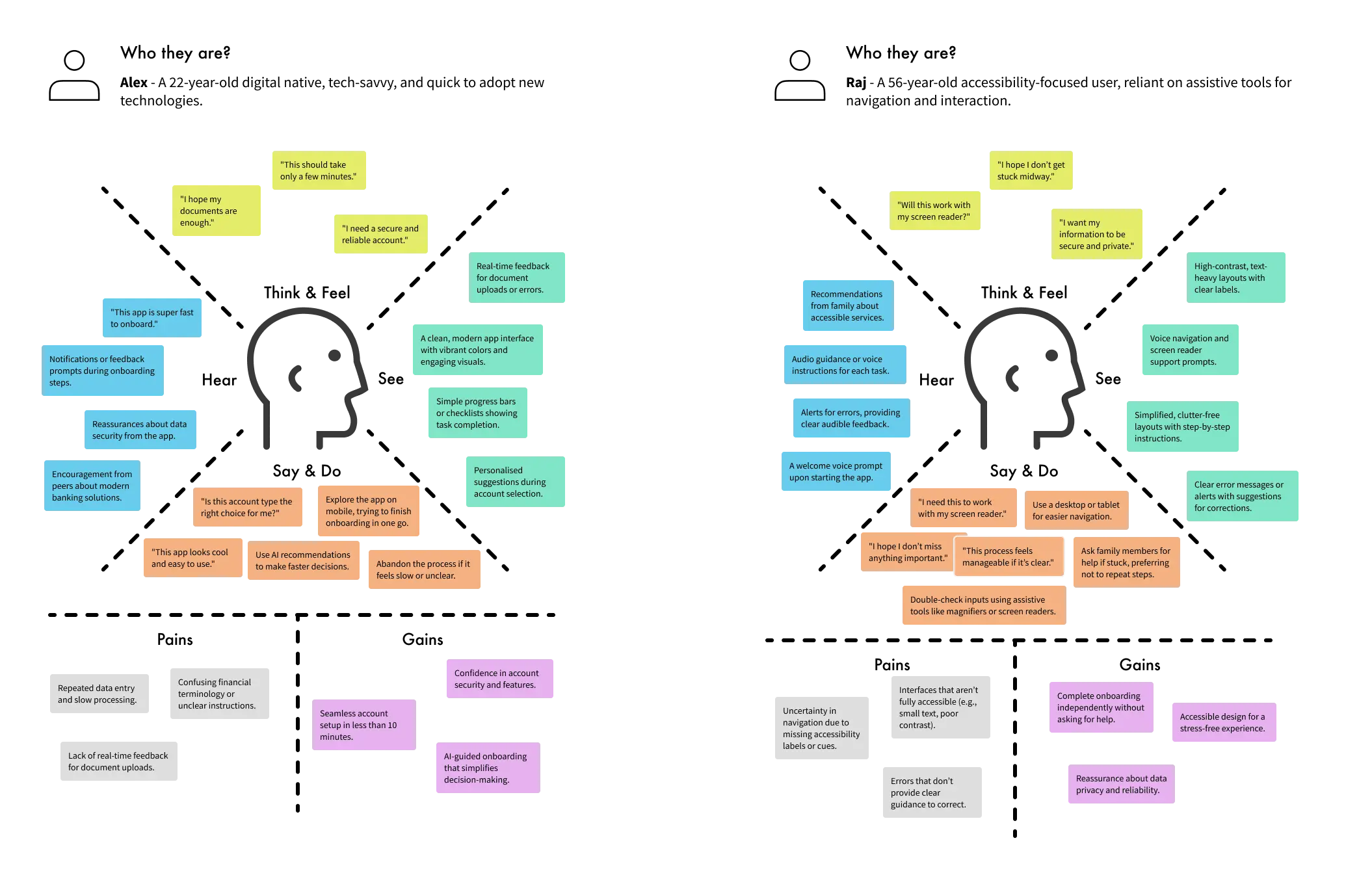
- Journey Mapping:
Identified six key stages (Entry → Selection → Upload → Verification → Personalization → Completion), along with emotional peaks and drop-offs.
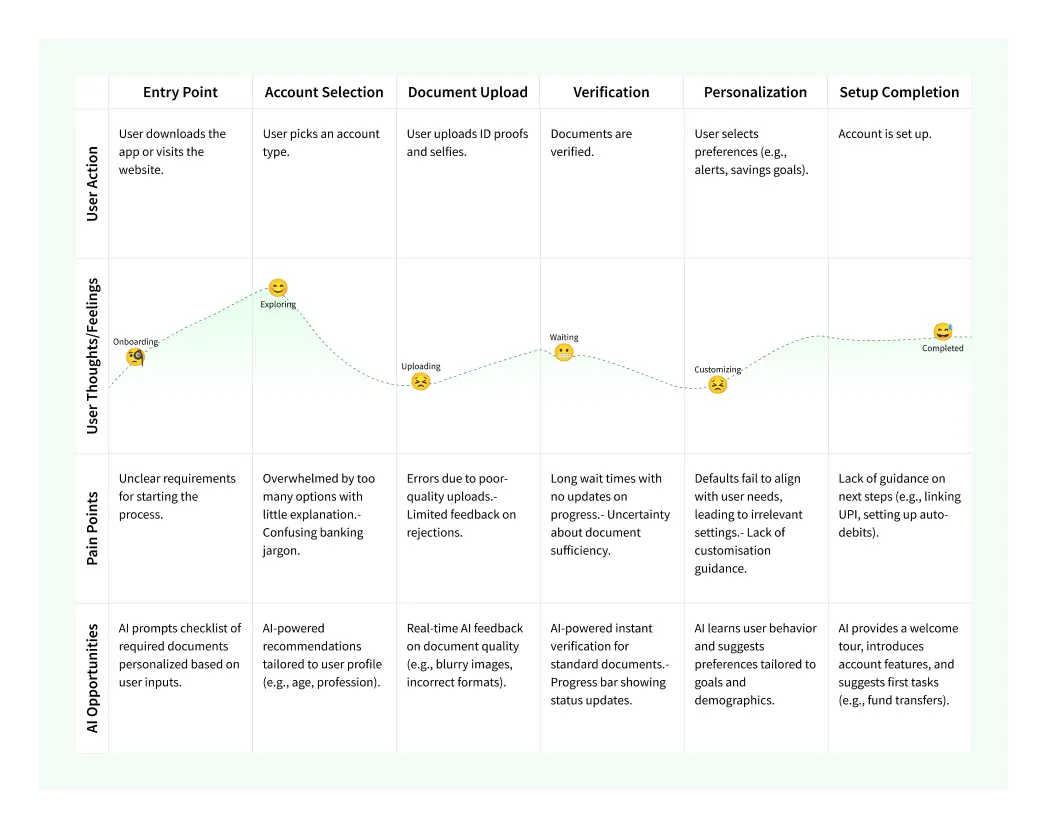
- Conversational UX Mapping:
Defined message tone, response patterns, and fallback structures for edge cases.

- Bias & Barrier Framework:
Mapped internal vs. external factors that could help or hinder adoption for different users.
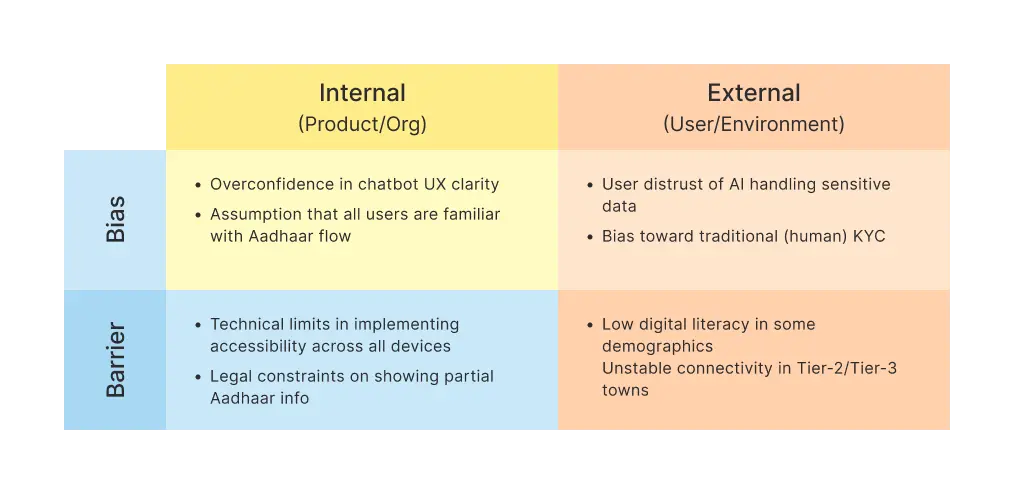
These insights helped shape an onboarding journey that adapts to both fast-track and guided users, without compromising on compliance or trust.
Design Strategy
Structured the experience into 4 core stages:
- Orientation & Consent
- Welcome screen sets tone with privacy-focused messaging.
- Introduction to Aadhaar verification with assurance: “No documents needed. Verification is handled digitally.”
- Chat-led KYC
- Conversational prompts collect: Name → Mobile → Email → Aadhaar
- OTP-based Aadhaar verification occurs inline
- Progress bar & success feedback reduce anxiety
- Accessibility toggles (high contrast, font size, voice aid) always available
- Video Verification
- After Aadhaar match, user is transitioned to live video call
- Pre-verification checklist:
- Be in a well-lit space
- Use plain background
- Enable camera & mic
- Verification is completed by an authorised representative
- Summary & Account Creation
- A review screen lets users confirm details or edit
- On success, a final message affirms: “You’re all set. Your account is now active.”

Experience Goals
- Foster Trust Early – Highlight secure handling of Aadhaar with upfront messaging.
- Simplify with Conversation – Let users engage naturally instead of filling long forms.
- Guide in Real Time – Show progress feedback, OTP status, and retry suggestions.
- Design for Diversity – Accommodate both high-speed users and accessibility-focused users.
- Zero Document Upload – Aadhaar verification is completed via encrypted APIs without file handling.
Reflection
SwiftKYC showcased how a product could balance automation and empathy. The design allowed users to move fast when confident—or receive support when unsure. By deeply integrating accessibility and privacy from the first touchpoint, the product earned trust where it matters most: identity.